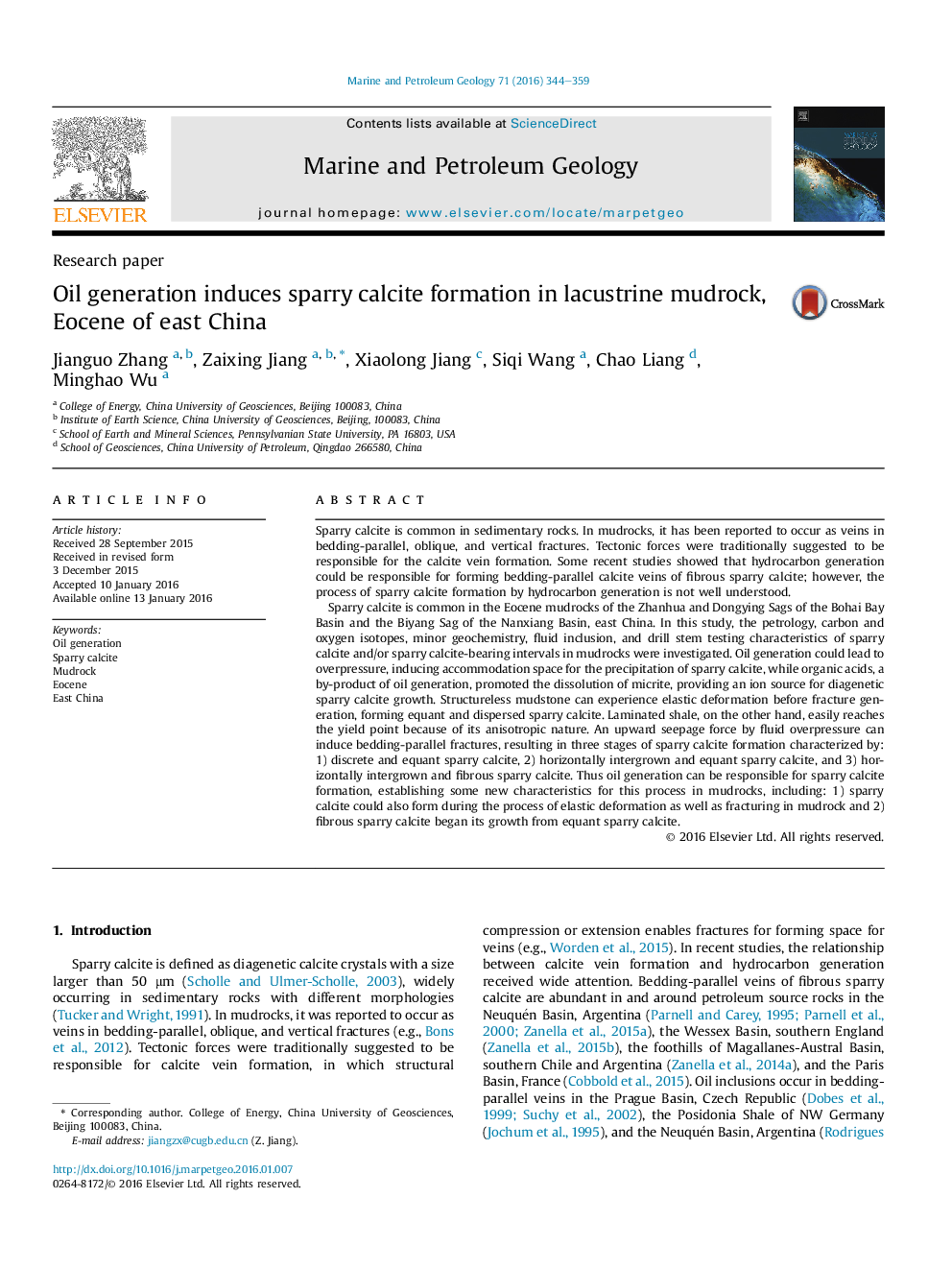| Article ID | Journal | Published Year | Pages | File Type |
|---|---|---|---|---|
| 4695435 | Marine and Petroleum Geology | 2016 | 16 Pages |
•This study establishes a detailed process of sparry calcite formation by oil generation in mudrock.•Sparry calcite could form during the process of elastic deformation.•Fibrous sparry calcite began its growth from equant sparry calcite.
Sparry calcite is common in sedimentary rocks. In mudrocks, it has been reported to occur as veins in bedding-parallel, oblique, and vertical fractures. Tectonic forces were traditionally suggested to be responsible for the calcite vein formation. Some recent studies showed that hydrocarbon generation could be responsible for forming bedding-parallel calcite veins of fibrous sparry calcite; however, the process of sparry calcite formation by hydrocarbon generation is not well understood.Sparry calcite is common in the Eocene mudrocks of the Zhanhua and Dongying Sags of the Bohai Bay Basin and the Biyang Sag of the Nanxiang Basin, east China. In this study, the petrology, carbon and oxygen isotopes, minor geochemistry, fluid inclusion, and drill stem testing characteristics of sparry calcite and/or sparry calcite-bearing intervals in mudrocks were investigated. Oil generation could lead to overpressure, inducing accommodation space for the precipitation of sparry calcite, while organic acids, a by-product of oil generation, promoted the dissolution of micrite, providing an ion source for diagenetic sparry calcite growth. Structureless mudstone can experience elastic deformation before fracture generation, forming equant and dispersed sparry calcite. Laminated shale, on the other hand, easily reaches the yield point because of its anisotropic nature. An upward seepage force by fluid overpressure can induce bedding-parallel fractures, resulting in three stages of sparry calcite formation characterized by: 1) discrete and equant sparry calcite, 2) horizontally intergrown and equant sparry calcite, and 3) horizontally intergrown and fibrous sparry calcite. Thus oil generation can be responsible for sparry calcite formation, establishing some new characteristics for this process in mudrocks, including: 1) sparry calcite could also form during the process of elastic deformation as well as fracturing in mudrock and 2) fibrous sparry calcite began its growth from equant sparry calcite.
